Colorado's Consumable Wild Plants
Colorado has some of the best varieties of plant “super foods” known to nature growing in our own back yard. After extensive studies it has been proven that wild plants have a substantially higher range of nutritional value than store brought fruits and vegetables. Before modern day medicine the ancients used plants to strategically treat common aliments and even life threatening diseases. Today the World Health Organization (WHO) estimates that 80% of the world’s population still uses traditional remedies, including plants, as part of their health care tools. The majority of new drugs (70%) introduced in the United States are derived from natural products and primarily plants.
Here are a list of consumable and healing wild plants that can remarkably be beneficial to your health.
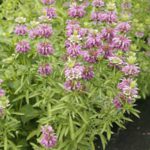
Lemon Bergamot (Monarda citriodora) is an ornamental or cut flower with purple pink flowers that grows knee high in length. Their leaves have a lemon scent aroma and are excellent for teas and cooking. The good thing about these plants is that they can self-sow and its seeds are easily collectible. Look for these plants to flower from August to frost.
Cattails have been known to grow in many parts of the United States and if eaten properly can produce a superb source of energy. In our region the two species of cattails are known as Typha latifolis and Typha angustifolia (Typha latifolis refers to being grown in shallow waters and angustifolia means deeper water) which are found side by side and crossbreed on occasion. The young tips on the plant, main root spurs, bottom white stalk and spaghetti looking rootlets protruding from the main roots are edible. These plants are a good source of vitamins A, B, C phosphorous and potassium.
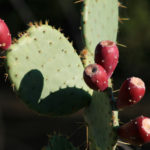
The Prickly Pear Cactus (Indian fig opuntia) are native to many regions in the Western United States to include the lower elevation of the Rocky Mountains. Its Daily Value assessment found it to be enriched with essential nutrients with 14% DV for dietary fiber, 23% DV vitamin C, and 21% DV dietary mineral magnesium. They are “bushy cactus” which can grow 10-15 feet tall, are colored red, yellow and sometime orange with a watery pup often mildly sweet and flavorful to taste. Be forewarned these plants have numerous small prickly spines and should only be handled with gloves.
Wild Strawberries (Fragaria vesca) are found growing in open fields, woodlands and even yards. Contrary to previous myth wild strawberries are not poisonous. They have a “look alike” called Indian mock strawberries that bears yellow flowers (versus the white flowers produced by wild strawberries) and harvest a fruit that has little or no flavor. Wild strawberry flower blooms in late spring to early summer and last around one to two months before yielding red strawberries. Rich in vitamin A, C, K, mineral calcium, iron, potassium, and silicon, these plants can be eaten straight from the earth (after being washed off of course.)
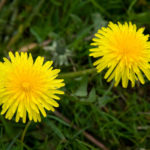
Dandelions (Taraxacum officinale) have phenomenal nutritional valve. The spring leaves contain a high valve of vitamin A, C, and iron. When the leaves and roots are combined they contain vegetable protein, fat and significate complex carbohydrates bound in the fiber. Some theorist suggest the name Dandelion comes from the Greek words for taraxos (abnormal health condition), akis (remedy), taraxo (I have caused) and achos (pain). These represent the plant’s ability to stimulate the body’s response to complex pain. This plant has been known to treat heart problems, acne, liver disease, eye conditions and have diuretic treatment properties. The Dandelion is a perennial which means it reproduces for 2 or more years without needing to be re-planted.
Yarrow (Achillea millefoilum) is a purple, pink or white flower whose blooms are round or oval in shape and grows around 20 inches in height. It can be used for various alignments such as cramps, fevers and toothaches. If applied as a topical, it can be helpful with skin itching and rashes as well as other issues. It is classified as a “healing herb” because of its blood clotting properties. In addition is relieves cramps associated with hormones, shortens the duration of colds and flu and improves relaxation during illnesses.
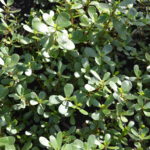
Purslane (Portlaca oleracea) has the best source of omega-3 fatty acids which prevents heart attacks and invigorates the immune system. Purslane is also antibacterial, antiscorbutic, depurative, diuretic and febrifuge. Its edible parts are its leaves, stem and flower buds. You can find these plants growing in sidewalk cracks, driveways, container gardens, flowerbeds, gardens, fields and roadside during the summer months. This nutritious weed has a distinct thick reddish stem and luscious green leaves.
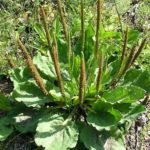
Broadleaf Plantain (Plantago major) has origins from Europe and Asia but grow plentiful in North American and Ontario. These plants can grow to a height of 12cm with leaves that grow in a rosette that can range from 5 to 30cm in length. The leaves have thick stems that meet at a base with a small pod housing dark seeds. The entire plant is edible and can be eaten raw or cooked. Broadleaf plantain is a potent broad spectrum healer unsurpassed at treating menopause, cancers, infections, inflammations, eliminating heavy metal toxicity, blood toxicity, asthma, tumors, allergies and aging.
Things to Keep in Mind Before Eating Wild Plants
There can be come dangers in collecting and eating wild plants. For instance you would like to consider the following:
- Are pesticides and herbicides used on the planting?
- Does your selected edible have a poisonous clone or look alike?
- Do you live in highly populated area that is prone to sources of high pollution?
*If ever in doubt research the plant before eating or cooking.*
It is important that you keep these factors in mind before choosing to feast on wild flowers. If done properly these planting can provide a source of daily nutrition, cure common ailments and increase your natural energies.



